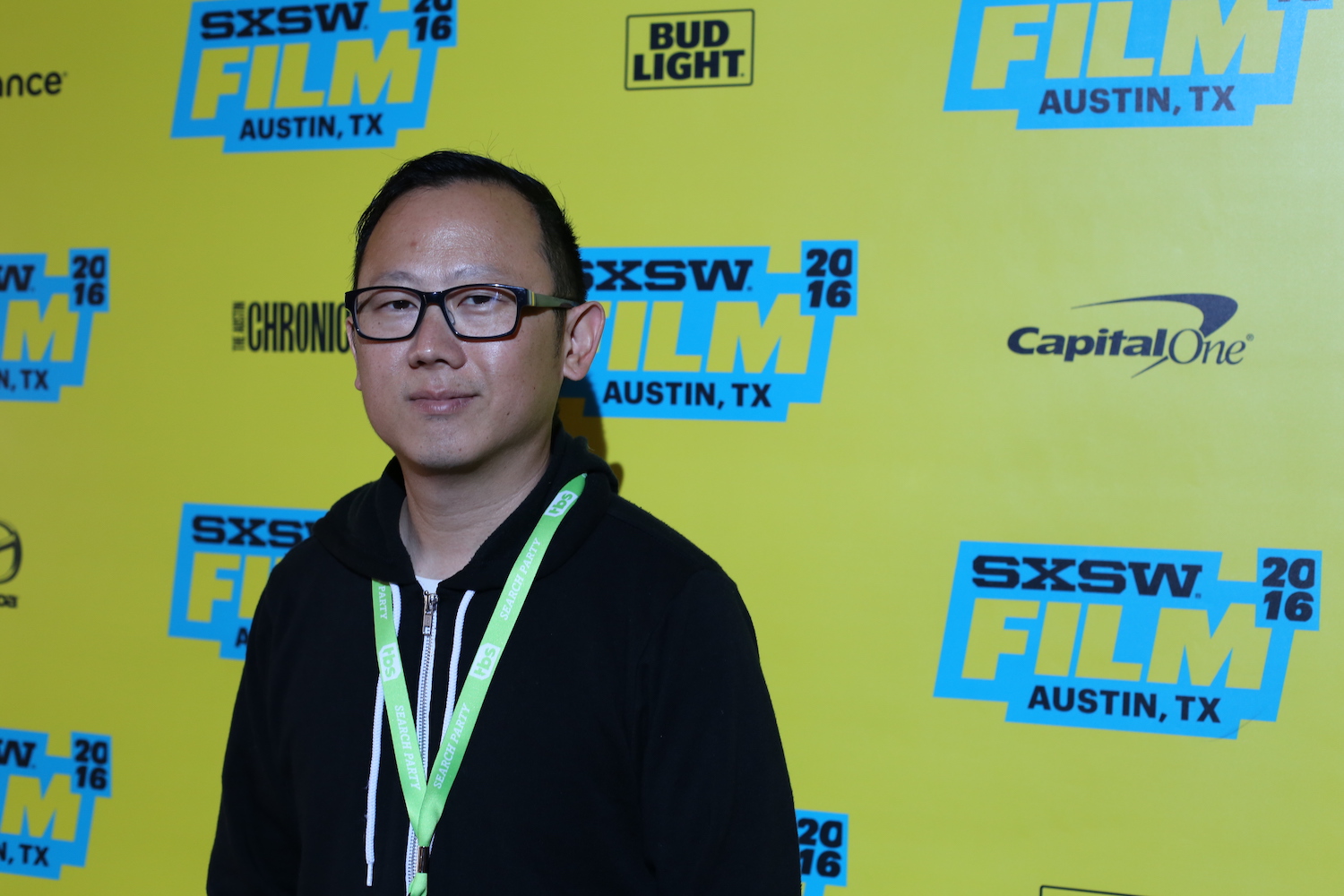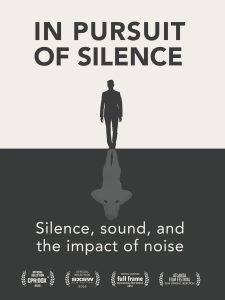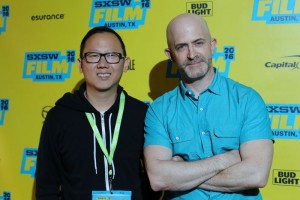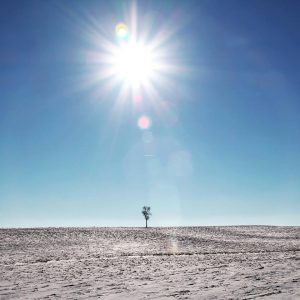A Conversation With Patrick Shen (IN PURSUIT OF SILENCE)

I met with director Patrick Shen to discuss his new documentary, In Pursuit of Silence, on Thursday, March 17, 2016. Mike S. Ryan reviewed the film for Hammer to Nail here. Shen’s fourth feature-length film is a finely crafted, gentle masterpiece that examines our relationship to noise – and our quest for its absence – in the modern world. Though primarily about the audio side of our universe, In Pursuit of Silence is woven together with exquisitely beautiful images from eight different countries, every frame carefully composed as a perfect complement to the soundtrack.
 As if to underline the importance of silence in the human thought process, and the difficulty in finding that silence, just as Shen and I sat down for our interview, the projectionist of the theater, where we had chosen to remain after the screening of Shen’s movie, suddenly started playing movie trailers, blasting sound over us. Such is the work environment for the staff cleaning the place. Fortunately for us, my shouted request (the only way to be heard) to stop the projection was honored, and we were able to proceed. Here is a condensed digest of that conversation.
As if to underline the importance of silence in the human thought process, and the difficulty in finding that silence, just as Shen and I sat down for our interview, the projectionist of the theater, where we had chosen to remain after the screening of Shen’s movie, suddenly started playing movie trailers, blasting sound over us. Such is the work environment for the staff cleaning the place. Fortunately for us, my shouted request (the only way to be heard) to stop the projection was honored, and we were able to proceed. Here is a condensed digest of that conversation.
– Christopher Llewellyn Reed
Hammer to Nail: Given the subject matter of your film, I find it fascinating that it is almost impossible, in our contemporary universe, to have a movie screening that is not affected by outside noise. Towards the end of this last screening, there were heavy moving sounds reverberating through the walls from some place nearby…
PS: Yeah…
HtN: And your end credits are ostensibly supposed to be silent, correct?
PS: Yes.
HtN: But it’s hard to tell, given all the excess noise in the screening.
PS: Right
HtN: So I read that you started out each interview in this film with a minute of silence. Now you’re no novice to filmmaking – you’ve made three previous documentary features, which I’ll ask about in a moment – did you find that this tactic led to different interview outcomes than in your other films?
PS: Yes, absolutely. I mean, anytime that we give ourselves a moment to collect our thoughts, I think we often find that what comes out of our mouths is more respectful and that we’re more thoughtful with what we say. And so we knew that going in to our film. Not only was pacing a concern – I think when people have a minute to collect themselves, they tend to speak more slowly, and that was important for the film – but also the fact that they have time to collect their thoughts.
In previous films, that never occurred to me, and people – professors, especially, who use very big words, sometimes in ways very unrelatable – tend to speak very quickly, through no fault of their own; they’re just used to speaking that way. And we found that doing a minute of silence before each interview in a way kind of humanized the conversation; we kind of shared this moment of silence together in a kind of communal way, and it was a more profound way for people to connect, and have a real conversation. So I think that tonally, and pacing-wise, I think it changed a lot.
HtN: Interesting. By the way, for the record, I am a college professor.
PS: Are you? (laughs) Ha! Well, I said “through no fault of your own.” No fault! (laughs)
HtN: (laughs) Speaking of your previous films, you’ve made, as I mentioned, three documentary features: Flight from Death: The Quest for Immortality, The Philosopher Kings and La Source, which was narrated by Don Cheadle. Is there a thematic through line that links all four of your documentaries? And what drew you to this particular topic in your latest film?
PS: That’s a good question. Yes, I think there is some through line. I don’t know if I’ll be able to articulate that very well until maybe when I reach the end of my career. So I’m not sure what the story is that I’m telling. I know that each film represents a different kind of chapter of my life on an existential level. My first film was about death, when I was really grappling with these ideas about how I was supposed to navigate my life despite the idea that I wasn’t going to be around forever. And so each one kind of represents where I was and who I was, on an existential level, and what kinds of things I was exploring. I’d like to think that it’s a biography, of sorts, and also these sort of breadcrumbs for my kids to follow, in a way, to get to know my journey a little bit better, and hopefully an aid to them as they grapple with some of these ideas as they become citizens of the world and start thinking about these things.
HtN: In In Pursuit of Silence, you had no moving camera, except when you had to occasionally reframe a shot in progress, or maybe some other slight pans, here and there. You made a choice to have the camera be still in the same way that you wanted the sounds to be restrained, or silent, for the most part. Can you discuss how you chose that aesthetic? Was it an obvious one from the beginning?
PS: Yes. It was something that we talked about at the very beginning. One of the things that I grappled with, before we’d even shot a single frame, was how do you even make a film about silence? When you embark on a process of making a documentary about something like silence – something so abstract and mysterious as silence – you risk stripping away everything that’s cool about it, everything that’s interesting about it. You kind of demystify your subject, in a way, because you’re trying to define it, or educate an audience about it. And so we didn’t know how we were going to do it. We knew that we didn’t want this film to be just a bunch of experts on camera talking about it.
It wasn’t until I started reading some of the writings of Nathaniel Dorsky – one of my favorite filmmakers – who often talks about his films as being “of” something and not just “about” something. And so that’s when it clicked, for me. We realized that, OK, this film has to be an experience. More so than, say, an educational piece, or an informative piece about silence. So we knew from the get-go that it had to emulate our experience of silence. Visually, and sonically, and even maybe, on some level, emotionally.
So every time we’re talking about silence, in the film, it tends to be a locked-down shot, where there’s no camera movement, which really kind of emulates our own experience of stillness and silence. We have sort of internal stabilizers, and when we look at something and we’re honed in on an image, or moment, it’s a very still image. And so we knew that it would be a lot of locked-down images like that, and no pans or zooms, and that sort of thing. There’s a little bit of hand-held work in the noisy sections, where we’re trying to emulate our experience of noise, but most of it is locked down.
HtN: Could you please talk about access to your subjects? How did you find them? I’m particularly interested in Greg Hindy – the man, under a self-imposed vow of silence, walking across the United States – but I’m also interested in the others, as well, such as George Prochnik, and his book, In Pursuit of Silence. And I’m curious, did you have to option his book, since you’re using the title?
PS: Early in our research, the book, In Pursuit of Silence, did present itself. There were about a dozen or so books that we had consulted with, at the very beginning, in our research. In Pursuit of Silence was probably one of the first books, for me, anyway, that introduced this idea of noise impacting our lives and hindering our engagement with the world. And so that was big for me. That really gave me a framework to explore with this film. And it was just a matter of reaching out to George Prochnik, the author, and having a conversation with him about the book, and we considered having him on as an advisor, maybe even optioning the book, but the fact of the matter was that it was just another resource. It was another source that we relied on. And it wasn’t a direct translation of his book, so there was no option involved.
Greg Hindy was another character that came up in our research. We had found an article somewhere online about this guy who had taken a vow of silence and was walking across the country. There was really little explanation of why he was doing it, in the article, but it piqued our interest. And so we quickly started researching this guy, Greg Hindy, online, to try and find out how we could get in touch with someone who does not have a phone or any sort of communication device on him. There was virtually no way to track this guy. So we found some contact information for his dad, who was kind of managing and watching his cross-country trek, and tracking his credit-card swipes at liquor stores and restaurants along the way. That’s how he knew that his son was safe and alive and still relatively on the same path that he had started out on. And so when we got in touch with his dad, we asked him, where was the last credit-card swipe? He said, some liquor store somewhere in northern California. And we got on a flight, flew to northern California, drove immediately to that liquor store – obviously, he had gone, already – and then we kind of just drove along a bike path that we’d assumed he’d probably be on, and, sure enough, about an hour or two later, we found him.
HtN: That’s an incredible story.
PS: Yeah! (laughs)
HtN: And he’s an incredible character. But you’ve got a lot of interesting characters, whom I assume you found just by researching and then approaching for interviews.
PS: Yes, a pretty standard approach, there. And as far as how we decided on the different characters, we knew that there were different types of silence that we wanted to address. Natural silence, for instance, which I think a lot of us associate with going to a park – a National Park – or a silent retreat. It’s a lot about the acoustic environment, and being around nature. National Parks was sort of an obvious choice, and they’ve been doing this innovative work with soundscape research, and so we knew that there’s a guy at the National Park Service that is actually recording sounds and talking about preserving quiet. We thought that would be a perfect fit for our film, obviously.
HtN: It took me a while to notice that you were putting the decibel level of your locations in the lower-thirds titles. At first it just didn’t catch my eye. And then, I began to notice it. Did you always plan to do that, to indicate the sound level of each location?
PS: Yeah, that was in the very beginning. Even when we had launched our first Kickstarter campaign, well before we’d started shooting, we started releasing these images of different places that we were going to, just for research, with the little “dB” level. It kind of became our little sort of trademark for the film. And it really kind of tied in nicely to what the film, eventually, became about, because ultimately, one of the things that we want people to take away from the film is that it’s important to be cognizant of our sonic environment. Because it’s affecting the way that we live our lives; it’s affecting the way that we interact with our families, and the people in our lives; it’s affecting the way that we engage with the world around us. And yet, the world – especially those with commercial interests – tends to continue to dump sound into the world, haphazardly. And it’s getting louder, and uglier sounding, and no one is thinking about how that’s impacting our metabolism or our ability to live our lives in a healthy, meaningful way.
HtN: So today’s screening opened with a marvelous performance by a musical artist …
PS: Morgan Sorne, he’s very well-established avant-garde musician.
HtN: And were we supposed to have a performance of the full 4’33” piece (of silence), by John Cage, afterwards?
PS: Yeah…I think somebody panicked, because there was too much silence, and started the movie. (laughs)
HtN: (laughs) I figured that. It was a good idea, though. Is this something that you plan to do at all screenings, before the film gets distributed? Have some kind of musical performance, followed by 4’33”?
PS: We’re trying to do that, whenever possible. There are some limitations of space, and time, with some of these festivals that we’re going to. For example, one’s in a mall, where they show films back to back, and there’s just no space to fit in instruments and whatnot, so it won’t be done at every single screening, sadly, but when we do release the film, eventually, I hope theatrically – we’re certainly in talks with some about that, so it should happen – we definitely want to do an “eventized” kind of approach, where perhaps not all of them, I don’t know if we’ll be able to pull that off, but certainly there will be select events, all throughout the country, and perhaps the world, where we’re setting the stage that way. Rather than throw advertisements at the people and trailers and spoken intros, and whatnot, we figured a performance of 4’33” would be probably the most appropriate way of introducing the film and getting people in the right space and frame of mind.
The first night that we premiered here, at SXSW, we had our composer come out with a quartet, and they got in front of the stage with a piano and quartet and performed one piece of the score and then did 4’33”…
HtN: And they let it go the whole way?
PS: The whole way. The second screening, too. We got through the whole 4’33”. No one panicked. But this time…I think someone freaked out! (laughs)
HtN: (laughs) Well, Patrick. Thank you so much! It’s a beautiful movie.
– Christopher Llewellyn Reed (@ChrisReedFilm)












paul sailhamer
i saw the film a couple of days ago in beverly hills. there was a great quote by somebody that i tried to write down hurriedly in the dark. didn’t turn out well. i hope you can help me get the actual quoye and source. i think it went like this,”there is much to learn by those who (evaluate the language at…………). Can you help me?
psailhamer